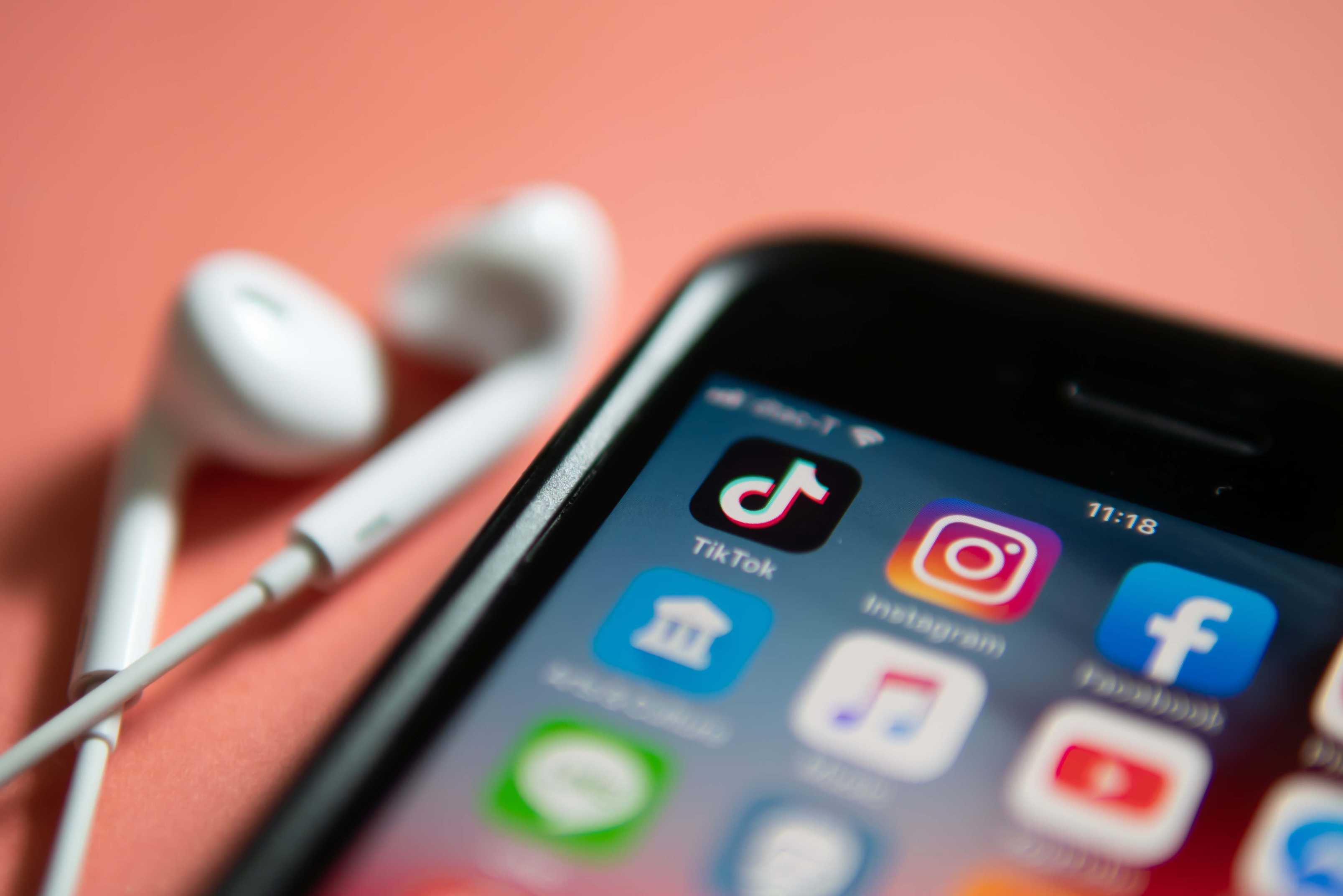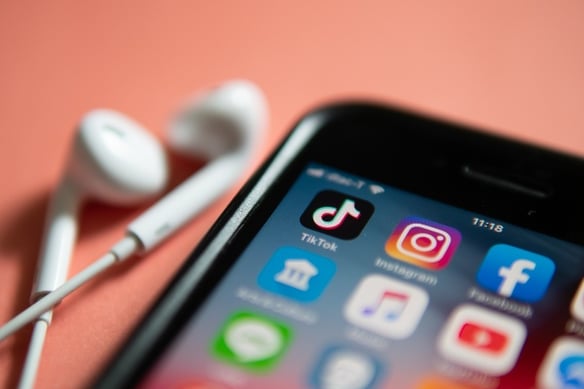- SERVICES
- HIGHER EDUCATION MARKETING
- ENGAGEMENT & ENROLLMENT MANAGEMENT
- STUDENT RECRUITMENT AGENCIES
- PROFESSIONAL EDUCATION & TRAINING
- WHO WE ARE
WHO WE ARE
Learn more about Keystone Education Group, including our leadership structure, why choose Keystone as your educational partner, and company press releases.
QUICK LINKS
- RESOURCES
RESOURCES
Find a range of helpful resources to help with your educational marketing. From on-demand webinars, reports & data, to customer testimonials and our downloadable media kit.
QUICK LINKS
- NEWS
- REQUEST A CALL

- Keystone Higher Education News
- Inspiration to Make Your Higher Ed Social Posts Go Viral

From choreographed dance moves, and cats playing piano to baby sharks and Justin Bieber, there may never be a perfect formula for "likes" and shares on social media. In the ever-changing world of higher education marketing, institutions are challenged to keep up with prospective students' current social media trends. They must also continue impressing their families through a professional and prestigious lens. To better understand what grabs your audience's attention, you first need to explore the most popular platforms based on age range.
Social Media Platforms by Student Type
According to of YPulse's May 2020 survey, Millennials (born between 1981-1996) spend around five hours a day on social media, while Gen Z (born between 1997- 2015) spends over six hours a day. When asked about their favorite social platform, 13–18 year olds chose Instagram, YouTube, and Snapchat; 19–25 year olds chose Instagram, TikTok, and Snapchat; and 26–37 year olds chose Facebook, Instagram, and YouTube. When segmenting these three audiences by college student type, prospective undergraduate students are focused most on Instagram, while older prospective graduate students prefer Facebook.
This shows us that videos are king. Some universities may have professional cinematographers on hand to shoot expert footage, but you don't need to have Hollywood-quality film to make an impact; you need an angle. TikTok's popularity has spiked during the pandemic because it delivers short, concise, uplifting content for people to laugh at and connect with. Best-practice TikTok and Instagram users have a specific aesthetic that isn't scripted and rehearsed. The light-hearted spontaneity is why the platform is attractive to the younger generation battling the unpreceded year that was 2020. It’s okay to keep your institution's posts light and sweet, as long as your team posts frequent and relevant content.
Encourage your audience to share and comment on posts. Most YouTube hosts ask you to like and leave an opinion in the comment section, so prospective students are already accustomed to this pitch. Regarding TikTok , don't try to be something you’re not. Popular memes, TikTok trends, and pop culture references travel at the speed of light). If your admissions representatives, current student workers, or university marketing team tries to come across as a cool Gen Zer, you’ll automatically lose authenticity points, and likely followers.
Most liked Instagram post of all time — @world_record_egg.
In 2019, an incredible, edible food item cracked records for most likes on Instagram. The original post was short, intriguing, random, and left Instagrammers wanting more.
55 million likes later, the egg began to crack, and followers couldn't wait for answers. Finally, during the Super Bowl, it was revealed Hulu and the egg had partnered to raise awareness about mental health. (See 20 Most Liked Pictures on Instagram)
What can higher education social media marketers learn from the world_record_egg is that novelty captivates audiences. Prospective students want to be on the inside. During alumni reunions, graduates reminisce about college traditions. Each year, thousands of first-year students sign up for sororities and fraternities. High school seniors show off college sweatshirts after their first campus tour. These examples tie into the concept of novelty, meaning its new, exciting, or unique.
The best universities on social media have a unique look, authentic content delivery, and a novelty angle to turn followers into enrolled students, and graduates into lifelong influencers. The egg also proves taking random risks is worth it on social media. Out of all the marketing channels, social media is the most adventurous, allowing institutions to completely change their messaging tone and take a step back from admissions lingo. Two years after the original post, the @world_record_egg holds the title as "most liked" post ever, but who has the title of "Most Popular University on Social Media"?
Most popular university on social media — Harvard University
With nearly double the followers (1.8 million) of the #2 institution on Instagram (University of Cambridge), Harvard University clearly has a firm handle on their social media game. It doesn't hurt to have the global brand recognition that rivals Coca-Cola and to be at the top of almost every "Best Universities" list since the college ranking system was created. Toppling their Instagram presence, Harvard's Facebook page has over 3x the followers at 6.1 million. Combine Facebook and Instagram followers with fans of their Twitter handle, and Harvard sits comfortably as the leader of viral higher education with a total of 9.1 million followers as of March 2021. This whopping figure doesn't account for Harvard Business School, or the loyal alumni association, which is nearly 80 thousand strong on Instagram alone.
What can we learn? Take a look at Harvard's Highlights on Instagram. Highlights are the little circles under the bio at the top of every Instagram account. These themed collections of Insta Stories you’ve already posted are an excellent way to categorize exciting events and news from the past. Here are some facts about Highlights:
- A Highlight can have up to 100 photos and videos in it
- You can add as many Highlights under your bio as you want
- They last forever until you decide to remove them
- You can see how many views the Highlight receives
- If you add more than 100 photos, Instagram will remove the first photo you posted in your Highlight to give your new photo a free space.
As an Ivy League institution, their central esthetic throughout the professionally shot photography is prestige. Harvard knows who they are in their posts, and their Instagram tells the story. To convey a more outgoing, friendlier side, they build Insta Highlights around themes like "Mascot Madness," "Hasty Pudding," "Book Recs," and "Then and Now." Prospective students, parents, alumni, professionals, and future employees of the institution gather on Instagram for something different. Harvard delivers a uniquely targeted message to each of them, all from the same account.
Social media platforms help level the playing field in higher education marketing. A small school with little-to-no marketing budget has the potential to go viral based on one incredible idea. Your institution doesn't have to be Harvard to give prospective students a unique experience, but it’s vital to schedule frequent posts, listen to comments, as well as keep content authentic and engaging. Who knows? Someday your university may be more famous on social media than an egg.
More about:
Related Tags
Just For You
Top Picks
Higher Ed Chats Podcast
Listen to the latest episodes of our Higher Ed Chats Podcast - new format for 2024. Hear from Higher Ed thought-leaders from around the world!
Who Will Win The Keystone Awards?

Watch the Keystone Awards Ceremony to see the winners of the 2025 Keystone Awards!
Subscribe
to get the latest news and updates





